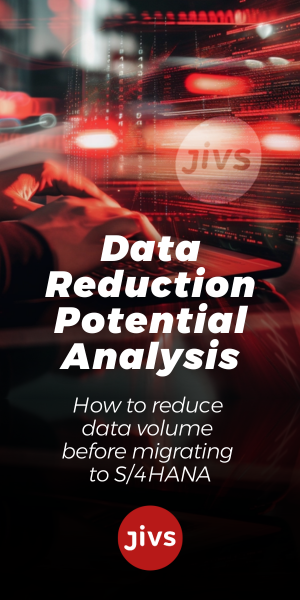Wider and more complex supply chains come with multiple points of failure. In this section, ERP Today’s feature editor, Helen Peatfield investigates the challenges arising from burgeoning aspects of modern supply chain, and how a fully competent ERP system can help to protect against failure.
Faster delivery with minimal friction for the buyer is the new benchmark
HALA ZEINE – SAP
As enterprises diversify, shift business models and jostle for market share, supply chain management (SCM) is under increasing pressure to advance the fulfilment process. Tasks such as trimming time, minimising errors, adhering to compliance, security measures and quality assurance – often across borders – can be better managed with the right ERP system in place. Here are a few of the ways that artificial intelligence (AI), machine learning (ML) and even blockchain can help to deliver on time, on budget, safely, and aid being environmentally and ethically conscious en route.
“Consumers today are demanding seamless experiences and instant gratification, meaning supply chains are getting more complex and the margin for error is razor-thin. In order to attract and retain customers the entire supply chain network – from sourcing to delivery – needs access to vital information, real-time data analytics, and collaboration tools,” said Hala Zeine, president of digital supply chain and manufacturing at SAP, in conversation with ERP Today.
She also talked about market disruptors changing the way that consumers behave and what they expect: “Ecommerce giants such as Amazon have played a huge role in creating this demand driven society, promising customers fast delivery and a seamless experience from start to finish. This has reshaped consumer expectations and forced other organisations to be resilient and rethink how to remain competitive.”
What does ‘advanced’ SCM mean?
Many things, actually, and the onus is heavy and relentless. Just one chink in the chain will hinder the rest of the process, impact the organisation’s bottom line and have the potential to swiftly damage reputations. In the quest to deliver fast with minimal disruption, business leaders are looking to tighten up operations from front to back.
Leveraging technologies such as IoT (Internet of Things), machine learning, and blockchain can help to move from reactive to prescriptive operations. But getting to grips with the advances in SCM requires both deep examination of the technologies and of your own processes and desired outcomes. Bryan Nella, content and thought leadership for the supply chain at Infor described the difference between supply chains of old and the modern SCM challenge. He said “the pure complexity of production is no longer linear. Between carriers, 3PLs (third party logistics) and suppliers, it’s now more of a network.”
A non-linear supply chain requires a non-linear approach. Gathering and analysing data across vast international networks is a challenge in itself. Turning that data into predictive insights and being able to react is an even bigger one. Nella went on to explain that legacy systems can’t manage the huge volumes of data that such complex supply networks generate and consume. This means less visibility and less control. He described what business leaders want and need from modern supply chain applications. “Everything comes back to UX (user experience). They want to see their supply chain in motion. To drill down on a map vs looking at a spreadsheet.”
Tap the breaks and make sure they are not adopting blockchain for the sake of blockchain
BRYAN NELLA – INFOR
This takes the notion of visibility from the figurative to the literal. Physically seeing what’s moving and what isn’t helps businesses make better decisions faster. If some of those decisions can be automated then all the better. So what does it take to get from a traditional supply chain management model to faster, more efficient and dynamic operation? Experts posit that a mix of new and emerging tech is the answer.
Robotics, blockchain, machine learning and advanced analytics are all tipped to bring financial, optimisation and accountability gains to aid greater supply chain visibility and control. But each technology is at a different level of maturity and adoption, and some is still being met with a healthy dose of scepticism. In a report published late last year by research firm, Gartner entitled ‘Predicts 2019: Future of Supply Chain Operations’,’ it is forecast that ‘by 2023 at least 50 percent of large global companies will be using AI, advanced analytics and IoT in supply chain operations.’ Given the hype and supposed speed of more intelligent technology adoption, one cannot help wonder what the other half of the ‘large global companies’ will be doing to stay competitive via their supply chain set ups.
Technology combinations for advanced supply chain management
While AI and ML are not quite ready to make all the supply chain quandaries disappear, the former is becoming more sophisticated and widespread for modern enterprise planning and operations. For the latter, SAP’s Zeine described how ML is enabling faster, smarter supply chain management today: “Machine learning technology adds another layer of insight, helping organisations turn massive amounts of data into actionable insights. Leveraging sophisticated algorithms and machine learning technology allows organisations to ‘learn’ from, and make sense of, the information that’s being collected at every point in the supply chain. Having the ability to continuously monitor data and make precise, intelligent predictions has a profound impact on organisations’ ability to understand their customers and succeed in a competitive sales environment.”
Automation has further benefits. By allowing RPA (robotic process automation) and ML to take over the mundane aspects of supply chain processes and decision-making, humans can focus more energy on the bigger ideas, judgements and creative aspects of running a business. “Supply chain management can at times require both repetitive and interpretive work. What’s great about machine learning is that it can do both the front office tasks and the back office tasks, managing the repetitive busy work that goes into supply chain management as well as helping with the predictive and subjective operations,” said Zeine. “One of SAP’s main goals is to ensure all supply chains are prescriptive in nature rather than reactive – an area where machine learning provides immense value. It allows organisations to access, analyse and find patterns in big data in a way that is beyond any human capabilities, meaning supply chain managers can get one step ahead of consumers’ evolving expectations.”
Blockchain fatigued before proper take off
Nella at Infor advised that although blockchain is making people aware that automation is important, there still hasn’t been a great number of use cases. His advice was that businesses should “tap the breaks” and make sure they are not adopting blockchain for the sake of blockchain. He isn’t alone on this. The same Gartner paper that predicted a significant upswing in advanced SCM technologies also predicts that ‘by 2023, 90 percent of blockchain-based supply chain initiatives will suffer blockchain fatigue for lack of strong use cases.’
Zeine dived deeper into the benefits of leveraging blockchain technology in the supply chain strategy: “Blockchain can be a means to simplify and accelerate the digitisation of the enterprise by data sharing in a trustful way. Unlike other technology applications, blockchain creates a tamper-proof supply chain history, which can be shared and seen by each participant. This allows all parties involved in the chain to share information, without requiring a central administrator, eliminating risks associated with centralised control.” It’s not just the logistics phase of a product’s life cycle that can be tracked by blockchain. “Finally, blockchain technology has the potential to streamline supply chains even further, providing an impenetrable record of the movement of goods across their entire life cycle. While adoption is still low, we expect to see more use cases involving improved transparency, more precise traceability, enhanced performance, and secure transactions.”
Eric Cotteret, manager of Logistics Reply spoke about the companies within the Reply Group that are testing blockchain. “The main benefits of blockchain are the guarantee of authenticity across a supply chain and the automation of contracting for example.” He also spoke about new directives placing extra governance on pharmaceuticals. This is clearly a strong use case example that elevates blockchain from its beginnings – as a purely finance-driven idea – to one with a higher cause: ensuring that consumers don’t receive counterfeit or contaminated medicine, and the ability to trace data associated with items from origin to point of sale.
Another recent example was last month’s (June 2019) announcement about an FDA (United States Food and Drug Administration) selected partnership comprising KPMG, IBM, Walmart, and Merck to support the US Drug Supply Chain Security Act. The objective is to address requirements to identify, track and trace prescription medicines and vaccines distributed in the US; as well as help to determine product integrity and storage temperatures of stock, amongst other stipulations. Being such a (deservedly) regulated space, the pharmaceutical industry is well positioned to join the charge for alternative uses for an irrefutable and immutable data ledger approach.
Cotteret believes that blockchain will have purpose beyond such heavily controlled industries. With counterfeit goods finding their way into the market in droves, that brands and retailers which can prove to be selling the real deal could benefit from the level of traceability offered by blockchain. And with the rise of the ethical consumer, how long will it before we want to know exactly who stitched our garments and how sustainably they were produced? Logistics Reply is currently working with an Italian fashion retailer that wants to give information and guarantees about the authenticity of its goods. “We are working with them on creating a visibility portal that could include some elements of blockchain,” Cotteret told us.
Blockchain will have purpose beyond such heavily controlled industries
ERIC COTTERET – LOGISTICS REPLY
Safety first with IoT alerts
Not only can blockchain reduce the risk of human error and malicious intent but, if used in conjunction with IoT, it can also help to safeguard businesses and their customers. For example, transporting goods such as medicines or food and beverages requires higher tiers of governance. “When logistics companies use blockchain in tandem with IoT, they are poised to gain unprecedented traceability into their supply chain, allowing them to identify and mitigate potential setbacks before they become costly,” said Zeine.
In combination, blockchain and IoT can help avoid issues before they arise within an ERP system. Blockchain’s tamper-proof data catalogue of an item’s provenance can flag issues as they happen; and IoT sensors can avert expensive issues before they arise. Zeine explained, “IoT can provide a wealth of information into the movement and ‘health’ of goods along the supply chain, eliminating unnecessary waste and costly setbacks. For example, IoT sensors on refrigerators transporting perishable items would alert supply chain operators if temperatures in containers hit potentially hazardous levels, allowing for adjustments to be made before products are spoiled.”
Some of the heavily regulated industries have already implemented some of the helpful technologies discussed here, paving the way for smaller operatives to take up the tech trend earlier on and grow with a more insightful approach. The supply chain plays a huge part in profitability, not just in terms of streamlining processes and broadening borders, but increasingly as ethical and environmentally savvy customers are demanding impactful preferences. Advance supply chain management processes could be applied to any industry but, as with any transformation or investment, businesses need to pinpoint where and how it will deliver value. The race to fulfil is complicated, intricate, speckled with potential hazards – and very much on.






